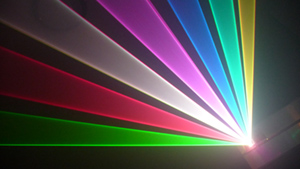-

The way understand beat frequency is: The beat frequency will occur at the mean of the difference of the two superimposed frequencies.
 Doc's website
The Health and Safety Act 1971
Recklessly interfering with Darwinís natural selection process, thereby extending the life cycle of dim-witted ignorami; thus perpetuating and magnifying the danger to us all, by enabling them to breed and walk amongst us, our children and loved ones.
Doc's website
The Health and Safety Act 1971
Recklessly interfering with Darwinís natural selection process, thereby extending the life cycle of dim-witted ignorami; thus perpetuating and magnifying the danger to us all, by enabling them to breed and walk amongst us, our children and loved ones.
-

Wouldn't it just be the difference? If one wave is at 1200Hz and is interfering with a wave at 1201Hz then you should hear one extra beat every second or in other words one extra beat every 1200 waves of the first note.
-

I guess beatfrequency is not the tool to describe the effect that Steve wants. The peaks have to line up pretty exactly.
Theoretical speaking : 2100nm stands to 600nm as 7:2. So, if the wavelengths of the two lasers are exactly that, coupled, and in phase, they line up every 4100nm. However when a phase-shift occurs the peaks never line up
What happens if the wavelengths are 599,99nm and 1100,17nm, two primes ?
-

I have not yet been able to access any related papers, but my guess is optical switching/modulation. Anyway, the sparseness of these pulsed beams will probably be a significant if not the overwhelming factor controlling interaction frequency. Beat frequency becomes interesting as the difference between two frequencies is small relative to the frequencies themselves. As I understand it the two frequencies don't have to have a common divisor and so prime should not be relevant, only the difference. So, in your example take 59,999nm and 110,017nm convert to frequency and subtract. Because the lasers are not coupled they will only interact randomly, but the average frequency (of this interaction) depends on the parameters of this interaction as in the 1 nm slice in time (3x 10 minus 18 sec) and the bandwidth ( 8nm and stretching through out the optics) which broadens the definition of the "peak" and hence the 1nm to at best 8nm and likely more. This is an interesting thought experiment. I don't think I'd relish trying to determine a good answer.
-

Where it gets worse is the process is angle sensitive. My reason for asking the question was to figure out how long I need to dwell at a given angle to see any possible phase matching.
Steve

 Posting Permissions
Posting Permissions
- You may not post new threads
- You may not post replies
- You may not post attachments
- You may not edit your posts
-
Forum Rules
